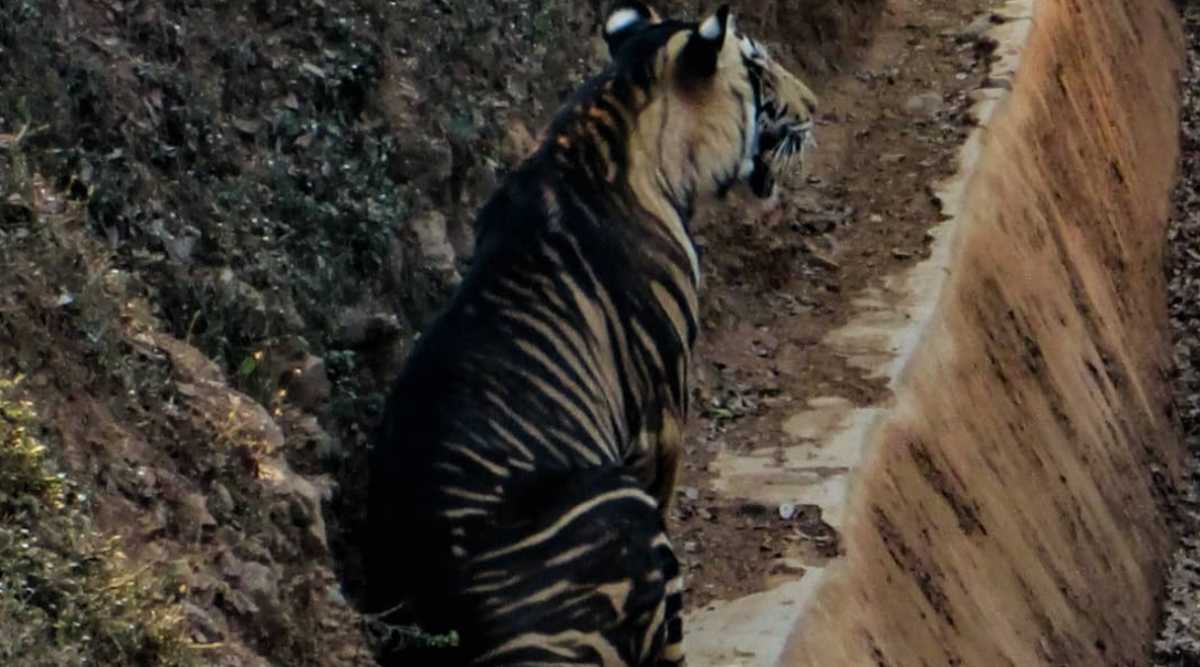ForumIAS announcing GS Foundation Program for UPSC CSE 2025-26 from 19 April. Click Here for more information.
ForumIAS Answer Writing Focus Group (AWFG) for Mains 2024 commencing from 24th June 2024. The Entrance Test for the program will be held on 28th April 2024 at 9 AM. To know more about the program visit: https://forumias.com/blog/awfg2024
What is the news?
Recently, scientists have resolved the mystery behind the ‘black tigers’ of Simlipal in Odisha. A recent study has discovered that the coat colouration and patterning that make the wild cats appear dark boil down to a single mutation in the Transmembrane Aminopeptidase Q (Taqpep) gene.
The researchers found that the Similipal black tigers may have arisen from a very small founding population of tigers and are inbred, providing an answer to the question that had perplexed so many.
The abnormally dark or black coat in such tigers is termed pseudomelanistic or false coloured.
What are the findings of the study?
First, tigers in the Simlipal Tiger Reserve are an isolated population in eastern India, and gene flow between them and other tiger populations is very restricted.
Second, such isolated and inbred populations of tigers are prone to extinction over even short periods of time.
Third, the researchers found out that pseudomelanistic coat came down to the genes. It was found that black tigers are mutants and are Bengal tigers with a single base mutation. Different mutations in this gene are known to cause similar changes in coat colour in several other species of cats, including cheetahs. The drastic change in patterning and colouring of the black tigers’ coat is caused by just one change in the genetic material DNA Alphabet from C (Cytosine) to T (Thymine) in position 1360 of the Taqpep gene sequence.
Fourthly, Genetic analyses and comparisons with a total of 395 captive and wild Indian tiger populations indicates that the mutation in Similipal tigers is very rare.
Fifthly, the only other black tigers outside of Similipal in India exist at the Nandankanan Zoological Park in Bhubaneswar, Ranchi Zoo and Chennai’s Arignar Anna Zoological Park, where they were born in captivity. These captive-born tigers shared a common ancestry with Similipal tigers.
Sixthly, the researchers also carried out investigations to understand why this mutation occurred at such a high frequency in Similipal alone.
One hypothesis is that the darker coat colour of the mutants offers them a selective advantage when hunting in the dense closed-canopy and relatively darker forested areas of Similipal as compared to the open plains of most other tiger habitats.
Other reason might be the small founding population and prolonged isolation from other tiger populations in India. Due to this geographic isolation, genetically related individuals have been mating with each other for many generations in Similipal, leading to inbreeding.
Source: This post is based on the article “Scientists unravel mystery behind Odisha’s ‘black tigers” published in the Indian Express on 14th September 2021.





